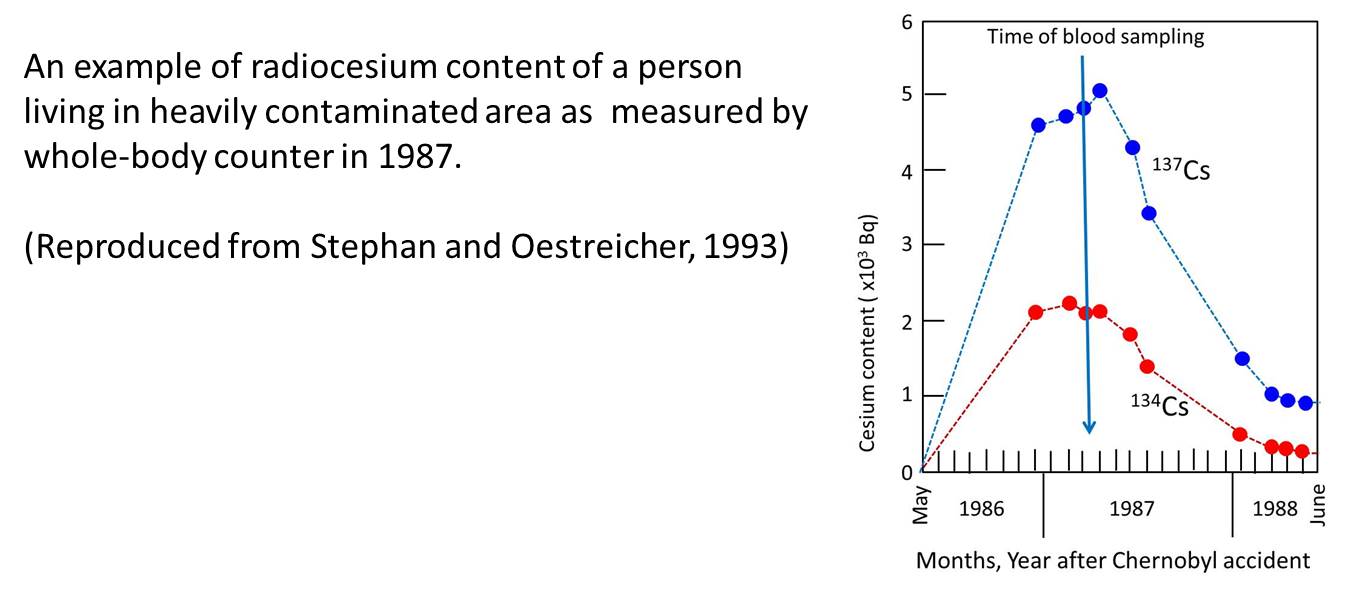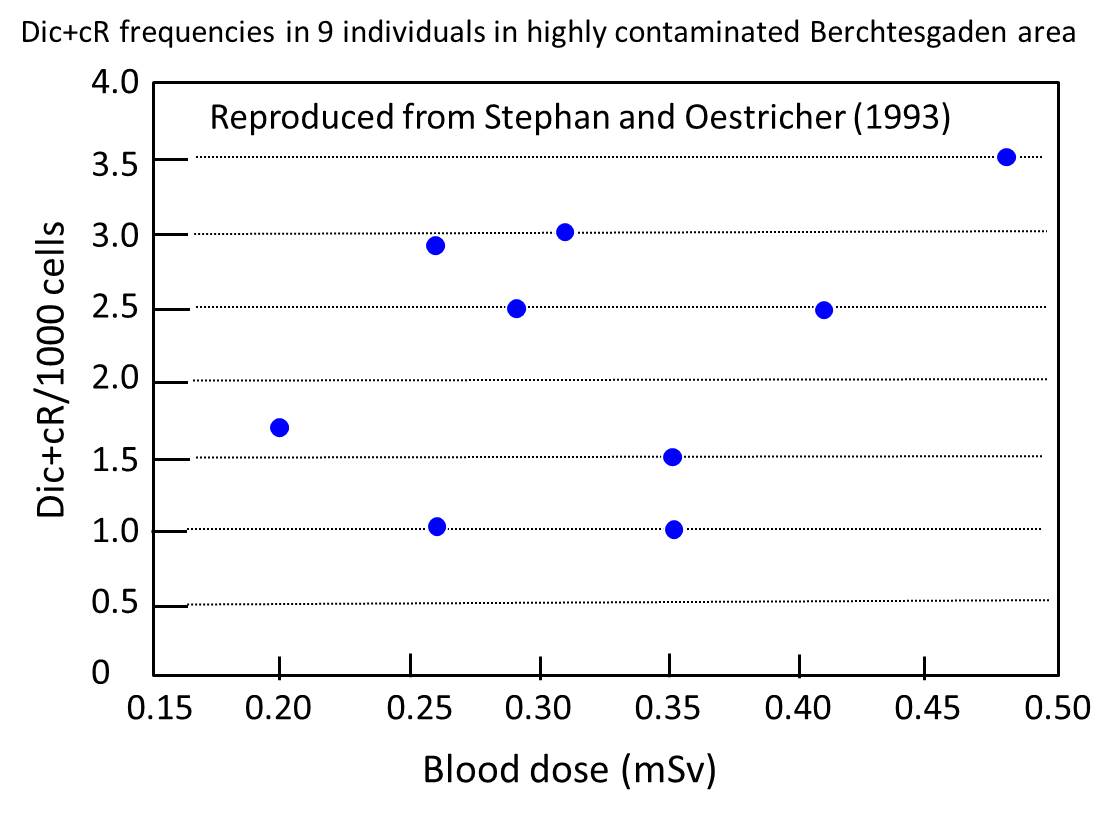Scenario
One specific area (i.g., Berchtesgaden) in the Federal Republic of Germany (FRG) experienced a particularly high contamination by fallout from the Chernobyl NPP accident in 1986. Berchtesgarden, where the natural radiation exposure was about 1.1 mSv/year, experienced additional external exposure of 0.56 mSv and mean additional internal exposure of 0.25 mSv in 1986 from fallout of Chernobyl accident. In the following years, these exposures decreased to about 0.2 mSv/year from both sources by 1989.
A total of 29 persons living in Berchtegaden were studied for chromosome aberrations in peripheral blood lymphocytes. Blood sampling was carried out in April-December 1987 for the first groups, and in November 1990-February 1991 for the second group. In 5 individuals from highly contaminated area, the levels of 134Cs and 137Cs body burden was measured by whole-body counter.
Control samples were taken from persons living low contamination area (Baden-Baden with additional external exposure being <0.03 mSv in 1986 decreasing to 0.01 mSv by 1989, and Tirschenreuth with additional external exposure similar to that in Baden-Baden). Blood sampling was carried out between May 1988 and April 1989 for Baden-Baden and in May-October 1989 for Tirschenreuth.
As compared with controls, chromosome aberration frequencies were elevated but no clear dose-response relationship was found.
Reference
Stephan, G. and Oestreicher, U. (1993): Chromosome investigation of individuals living in aras of Southern Germany contaminated by fallout from the Chernobyl reactor accident. Mutation Res., 319:189-196.

Chromosome aberration analysis in peripheral blood lymphocytes
